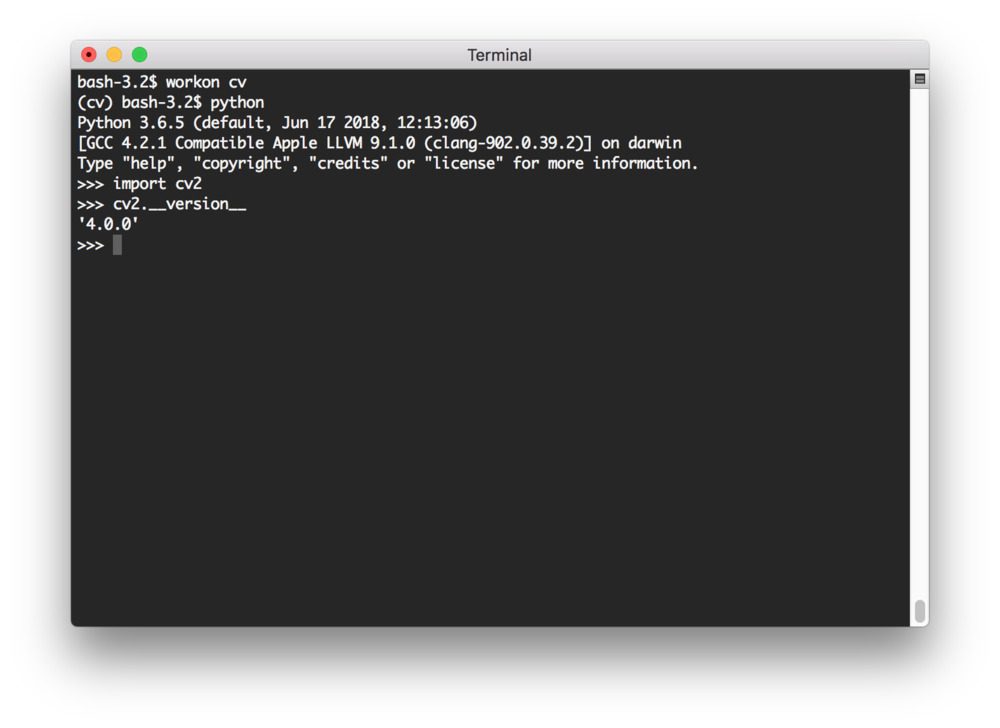

- #Install python opencv for jupyter in mac how to#
- #Install python opencv for jupyter in mac install#
- #Install python opencv for jupyter in mac download#
The traditional Jupyter interface, with several folders inside. Once you do, then click "New" (on the right-hand side) and open up a Python 3 notebook. Step 6: In your Terminal, type jupyter notebook and hit Return. You want to stop your kernel from repeatedly dying. Now to fix the Jupyter kernel issue!Īt this point, Python and Jupyter should be installed. If that doesn't work, then head here and follow the instructions.
#Install python opencv for jupyter in mac install#
Step 5: If you've installed Python but had trouble installing Jupyter, then go to your Terminal and type pip3 install jupyter. Once you're done, head back up to Step 3.
#Install python opencv for jupyter in mac download#
Note that the normal Anaconda download won't work here, as the M1 computer isn't 64-bit. You'll need to login with your Apple ID and follow the instructions. Step 4: You can install Python by going to XCode Command Line Tools. New Mac operating systems should have it already installed, so if you're finding an error, make sure that there isn't a typo somewhere.
#Install python opencv for jupyter in mac how to#
That's why we're here! In this blog, we'll walk through how to get Jupyter functional on your M1 computer - starting with the download step and ending with a fully operational Jupyter notebook. Voilà! Excited for my new MacBook! Your goal: Run a Jupyter notebook.Įither you're opening a notebook right now and your kernel instantly dies, or you haven't been able to get a Jupyter notebook operational yet. These instructions are up to date as of November 30, 2020. You, a data scientist or related tech professional, may have bought one.ĭisclaimer: We'll attempt to keep this updated as best we can. You've probably heard a lot about the MacBook that contains the new Apple M1 chip.


 0 kommentar(er)
0 kommentar(er)
